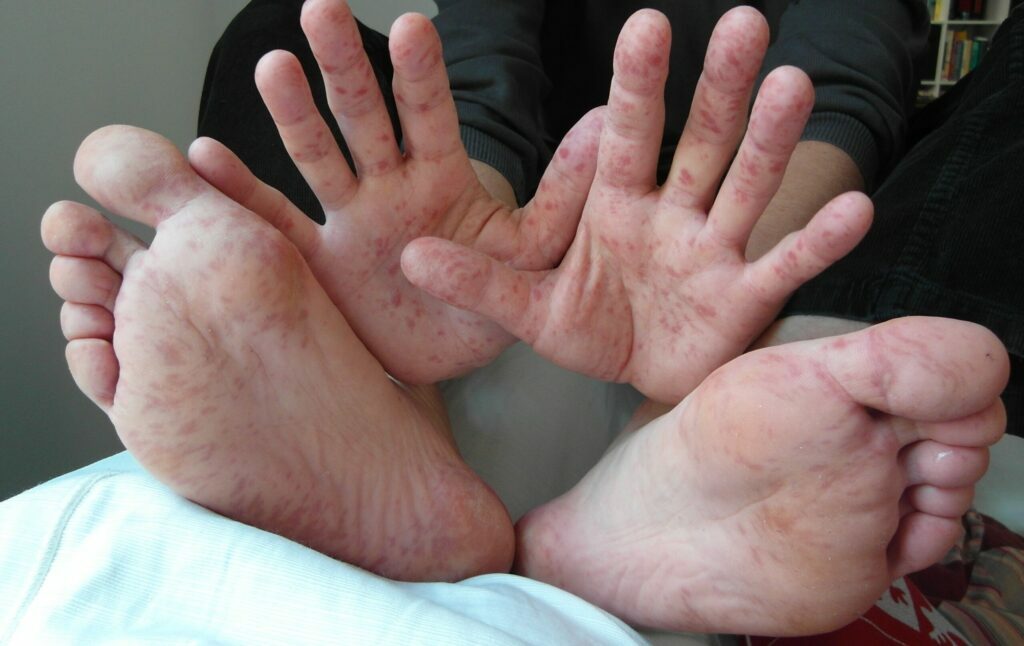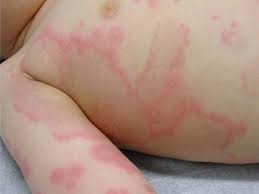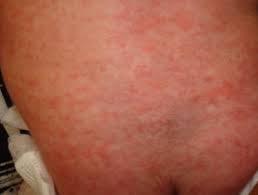Everyone knows the difficulty of trying to diagnose a rash. You see red splotches everywhere. What do you do?
Okay, you’ll probably call the hospital, or the nurse’s hotline, or your primary-care doc. You might even go to the hospital.
But what if you can’t? What if the roads aren’t travelable and all you’re getting on the phone is a busy signal?
It can be difficult even for medical professionals to tell which kind of rashes are routine and which are serious. Here are some tips to help you tell, but remember, this is for general information. A kid can fool you and look okay, then get very sick very fast.
What Kind of Rash am I Looking at? Common Rashes for Kids with Photos
Assess What is going on
Before getting into the rash specifics, get a handle on what you know and what you don’t. Ask yourself these two questions:
1. Does the child look sick? Children usually don’t fake it, so forget the rash and fever for a minute and observe the child. If they’re just lying around, lethargic, not even trying to play, they’re probably pretty sick.
Get them to a doctor as soon as possible, even in a disaster situation.
2. Has your child been exposed to a virus you know’s going around? If you know how sick the other children have been, this can make for an easier diagnosis.
Take a close look
Ask yourself these questions:
- Where is it?
- Is it raised, flat or blistered?
- Does it itch?
These three questions will tell you a lot of what you need to know. Then you can match up those clues with your knowledge of common childhood rashes.
7 Common Childhood Rashes with Pictures

1. Hand, foot, and mouth disease – Coxsackie virus
Where is it located? On the palms, on the soles of the feet, and/or in the mouth.
Is it raised, flat, or blistered? Blistered.
Does it itch? No.
Possible cause: Think virus—specifically coxsackie virus, otherwise called hand, foot, and mouth disease. The main thing to do is to make sure the child drinks fluids to prevent dehydration. Any fluids without caffeine will do.

2. Chickenpox virus
Where is it? Face and trunk and may have spread to extremities.
Is it raised, flat, or blistered? Bumps, but they’ll get tiny blisters on top, then break and crust over. More bumps will develop, so you’ll usually see all stages on the skin at once.
Does it itch? Yes, badly.
Possible cause: The chickenpox virus, which lasts a week to ten days. Treat the itching with diphenhydramine (Benadryl), cool compresses, or oatmeal baths.

3. Scarlet Fever
Where is it? All over.
Is it raised, flat, or blistered? Raised. It’s a fine, red rash all over the body that feels a little like sandpaper.
Does it itch? A little.
Possible cause: This is a strep infection with a rash. The child usually has a sore throat, but not always. That’s because the strep infection can be on the skin, even in the urine. Treat with an antibiotic such as amoxicillin, penicillin, or erythromcin. The child will usually get to feeling better in about 72 hours. It’s important to take the antibiotic for ten days to prevent the risk of rheumatic fever.
What to Do for a Virus?
If you can’t get professional medical help, there’s nothing you can do except try to keep the child comfortable and hydrated, and let the illness run its course.
For fevers over 102 Fahrenheit, give acetaminophen (Tylenol), or sponge the child off with lukewarm water. Never use alcohol or let the child get chilled. A fever suddenly brought down can trigger a febrile seizure.
Never use aspirin for fever in a child. It can increase risk for a life-threatening illness called Reye’s syndrome.

4. Allergic Reaction
Where is it? All over, random.
Is it raised, flat, or blistered? It consists of raised, red splotches.
Does it itch? Usually.
Possible cause: Allergic reaction. It could even be from the antibiotic. Stop the antibiotic and give diphenydramine (Benadryl).

5. Slapped cheek disease – erythema infectiosum
Where is it? As soon as cold symptoms, such as a mild fever, disappeared, the child’s cheeks turned bright red. Next came a fine, red lacy rash over the body.
Is it raised, flat, or blistered? Flat.
Does it itch? Sometimes.
Possible cause: Fifth disease. Also called slapped cheek disease. Official name erythema infectiosum. This viral illness is usually mild. The child usually feels fine, so do nothing. The rash will go away in a few days.

6. Roseola
Where is it? After a high fever that lasted two to five days, your child broke out all over in a pink rash.
Is it raised, flat, or blistered? Flat.
Does it itch? No.
Possible cause: Roseola. The rash will last a couple of days.
The Glass Test
The glass test can be used for where you press on the rash with a glass that has a clear bottom, and if the rash doesn’t quickly fade seek immediate medical attention.
Warning: The following rash can be a sign of a life-threatening disease.

7. Petechiae
Where is it? It can be anywhere on the body, but there will be more than just one or two splotches.
Is it raised, flat, or blistered? Flat. It looks like tiny blood blisters or red splotches underneath the skin. If you press on them, they don’t blanch or fade.
Does it itch? No.
Possible cause: Petechiae. Those blood blisters or red splotches are actually blood that has leaked out of the child’s tiniest blood vessels (capillaries). They can be a sign of a serious disease such as meningitis or sepsis. Get the child medical help if at all possible and as quickly as possible. One exception is if the child has been vomiting but looks pretty good otherwise. The strain of vomiting can cause the capillaries to bleed around the mouth. But the petechiae won’t be on the rest of the body.
WARNING
Even during a disaster situation, if the child’s lethargic, confused, or hard to wake up, or if they won’t drink fluids, won’t stop crying, or just look sick, get them to a doctor as soon as possible.
—
Resources
[1] Rashes in children. https://pharmaceutical-journal.com/article/ld/rashes-in-children
[2] What’s My Rash? Pictures And Descriptions Of 21 Rash Types. https://plushcare.com/blog/whats-my-rash-pictures-and-descriptions-of-21-rash-types/

